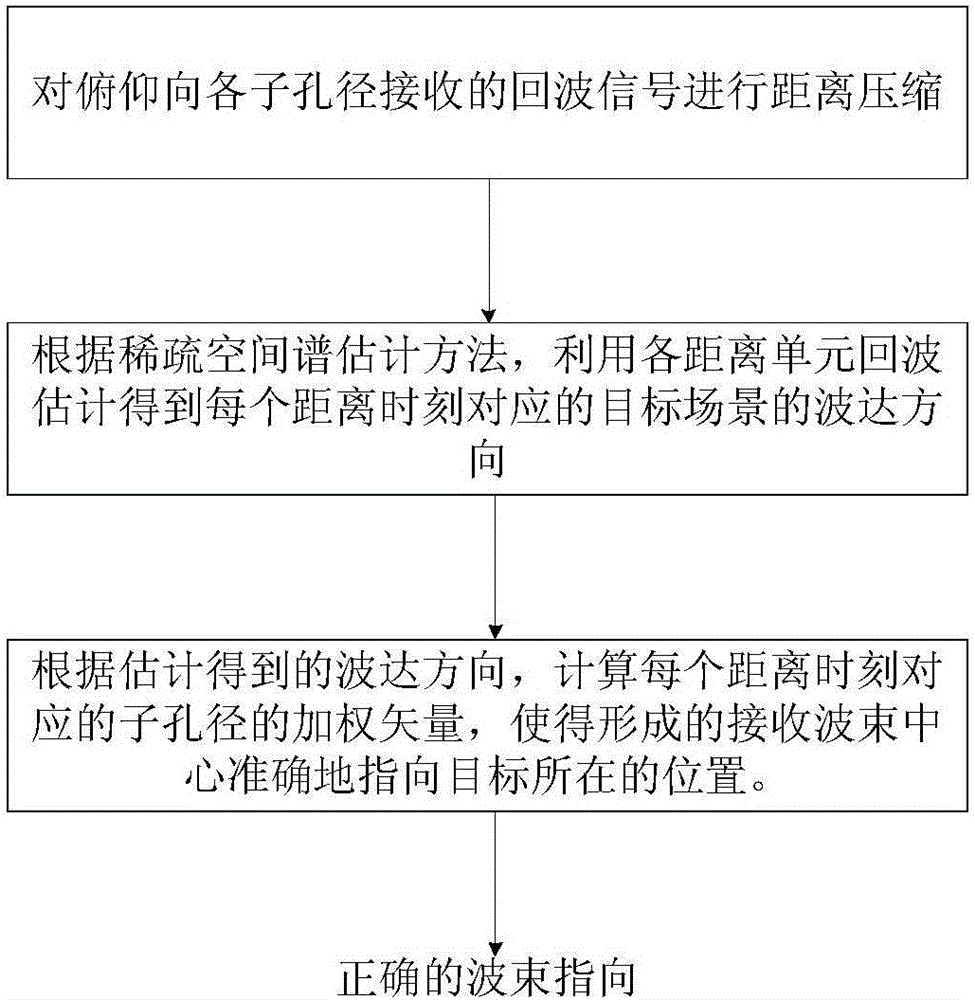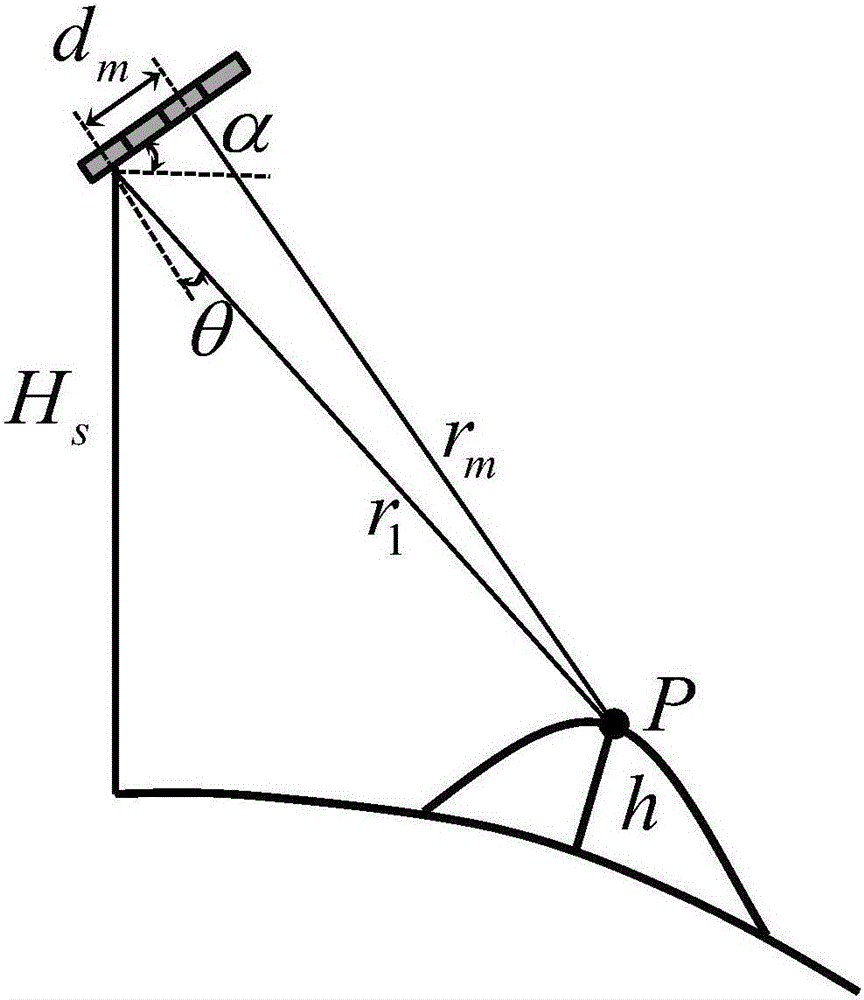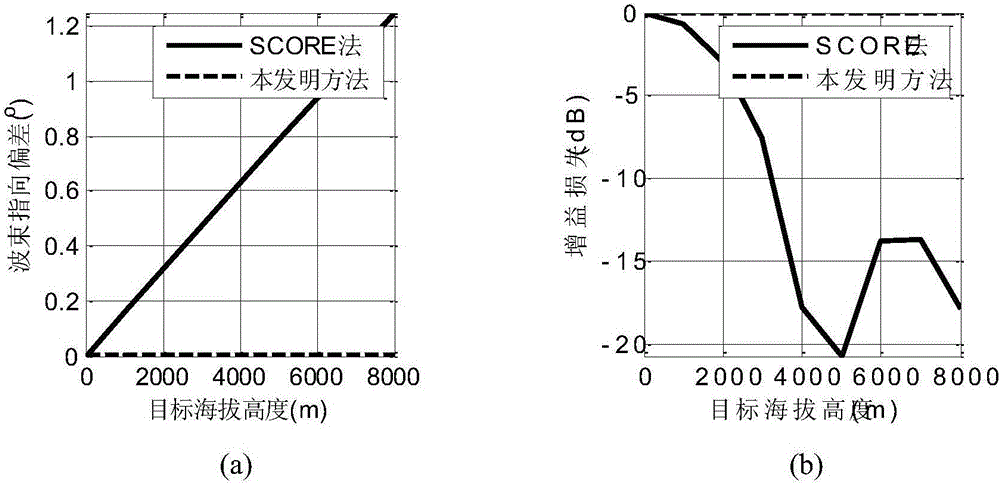Satellite borne SAR digital beam forming formation method based on sparse spatial spectrum estimation
A sparse space, digital beam technology, applied in the field of radar, can solve the problems of SNR loss of SAR images, the performance degradation of direction of arrival estimation, etc., and achieve the effect of ensuring the receiving gain
- Summary
- Abstract
- Description
- Claims
- Application Information
AI Technical Summary
Problems solved by technology
Method used
Image
Examples
Embodiment Construction
[0016] Refer to attached figure 1 , the specific implementation steps of the present invention are as follows:
[0017] Step 1, performing distance compression on the echo signals received from the elevation to each sub-aperture.
[0018] Assuming that the SAR system is divided into M uniformly distributed sub-apertures along the elevation direction, as shown in the attached figure 2 shown, where H s is the height of the satellite platform, d m Indicates the distance from the mth sub-aperture to the first sub-aperture, α is the horizontal inclination angle of the antenna, r 1 and r m respectively represent the slant distances from the ground target P to the first and m sub-apertures, h is the altitude of the target P, θ is the angle between the line connecting the slant distances from the target to the first sub-aperture and the normal line of the antenna panel, and its value Upwards away from the antenna normal is positive, and downwards is negative, which can be calcul...
PUM
 Login to View More
Login to View More Abstract
Description
Claims
Application Information
 Login to View More
Login to View More - R&D
- Intellectual Property
- Life Sciences
- Materials
- Tech Scout
- Unparalleled Data Quality
- Higher Quality Content
- 60% Fewer Hallucinations
Browse by: Latest US Patents, China's latest patents, Technical Efficacy Thesaurus, Application Domain, Technology Topic, Popular Technical Reports.
© 2025 PatSnap. All rights reserved.Legal|Privacy policy|Modern Slavery Act Transparency Statement|Sitemap|About US| Contact US: help@patsnap.com



